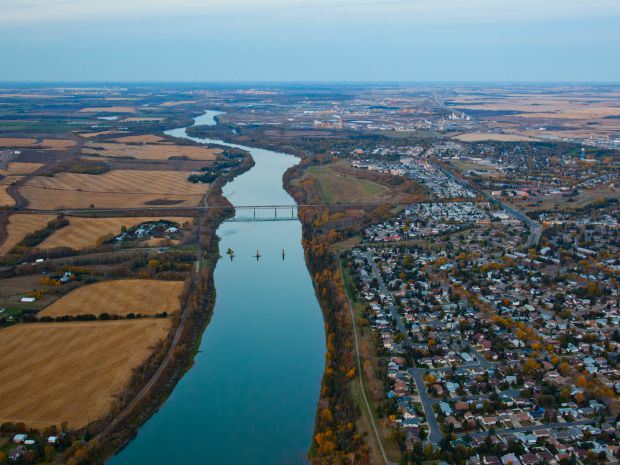The new federal government has already made something of a fetish out of declaring that “Canada is back” now that Liberals are in charge again in Ottawa. Justin Trudeau announced it the night of his victory, reflecting his party’s traditional view that other parties have no legitimate claim on power. His new environment minister has adopted the phrase CanadaIsBack as a hashtag as she prepares for UN talks in Paris on climate change.
And perhaps it’s true, if you accept a certain view of the country as a joint venture run from a power base stretching from Toronto to Montreal. Already the photos of the Queen have been pulled down from the lobby of Foreign Affairs headquarters by new minister Stephane Dion, and replaced with two paintings by Quebec artist Alfred Pellan. The Globe and Mail reports that Ontario Premier Kathleen Wynne called a meeting of 450 Ontario Liberals to thank them for their hard work in getting Trudeau elected, and urged them to accept jobs in the new government as a kind of fifth column for the province.
A “massive team” from Ontario lent their support to the campaign, it reports, including numerous senior people from Wynne’s office who were sprinkled around the upper echelons of the Trudeau brain trust. And it worked: Ontario delivered 80 of Trudeau’s 181 seats, and was rewarded with 11 seats in cabinet, three more than all four western provinces combined. The greater Toronto area alone has as many cabinet seats as western Canada. When Trudeau visited Toronto after the election he gave Wynne a public bear hug; when Dion spoke at his new headquarters he was cheered by civil servants; when Trudeau showed up he was mobbed. For Liberals, that’s Canada.
The collapse of oil prices has cratered the West’s position as the economic engine of the country, diminishing its clout with the resurgent eastern political leadership.
The outlook may not be so rosy for that part of the country that felt it had finally wormed its way into equal status within Confederation. For the West the picture is much more bleak. The Harper government gave powerful roles to westerners, tempering decades of divisive disputes. But “Canada is back” could soon also mean the West is back in its place.
The collapse of oil prices has cratered the West’s position as the economic engine of the country, diminishing its clout with the resurgent eastern political leadership. The International Energy Agency predicted Monday that the oil glut will continue until 2020, prices will remain weak, and demand growth will all but disappear in ensuing years. “We are approaching the end of the single largest growth story in energy history, said IEA executive director said Fatih Birol.

Anyone hoping that China will once again come to the rescue with a renewed surge in demand will be disappointed, the agency says, as Beijing – driven by horrific pollution problems — moves away from heavy industry to consumer-led growth, and strives to become a world leader in electric vehicle production.
Alberta’s NDP government introduced the biggest deficit budget in provincial history last month, with similar shortfalls anticipated for years into the future. President Barack Obama’s rejection of the Keystone XL pipeline, and public opposition to pipelines running through British Columbia to the Pacific Coast, leave oil producers increasingly dependent on the 4,600-km Energy East project that would ship crude from Alberta and Saskatchewan to refineries in the east for export. But Energy East faces opposition from Liberal governments in Ontario and Quebec. TransCanada Corp. recently cancelled plans for a marine export terminal in Quebec as part of the project, following protests over the impact on calving sites for beluga whales. Without the terminal and the jobs it would provide, said Premier Philippe Couillard, calculating the benefits to Quebec becomes “more complicated.”
“It remains to be seen whether this project is a good project for Quebec,” added energy minister Pierre Arcand.
In the past, western Canadians were accustomed to calculations of Confederation that amounted to “what’s in it for us?”
In the past, western Canadians were accustomed to calculations of Confederation that amounted to “what’s in it for us?” Western concerns could be tolerated as long as the oil industry thrived and eastern provinces drew billions of dollars in side benefits. It was the migration of tens of thousands of eastern Canadians in search of jobs and opportunity that changed the Alberta culture to such a degree that an NDP government could be elected in place of the 43-year Tory rein. Many may soon be heading back east: office vacancy rates have soared and rental rates plummeted in Calgary, and even liquor stores are struggling: Liquor Stores N.A. Ltd. reported a drop in year-on-year sales last week due to a sharp decline in sales in oilpatch areas.
After decades of being shut out from western provinces, the Liberals have pledged there will be no return to the days when they treated Canada as if it ended at Ontario. Trudeau campaigned extensively in the West and won 29 seats in the four western provinces, up from just four in 2011. But 29 voices can be easily drowned out by 155 others, especially as the demands of the Liberals’ environmental agenda push Ottawa inexorably towards a carbon tax of some sort, which can only put more pressure on an energy-based economy. It was Dion, after all, who as Liberal leader sought to use carbon taxes as the financial base for a social agenda popular in eastern provinces.
In some districts, Canada may well be back. But in others it may be back to a struggle to make themselves heard.
National Post





























Laissez un commentaire Votre adresse courriel ne sera pas publiée.
Veuillez vous connecter afin de laisser un commentaire.
Aucun commentaire trouvé